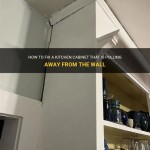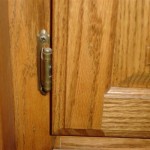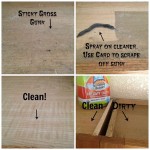Painting Around Kitchen Cabinets: A Comprehensive Guide
Upgrading your kitchen's aesthetics with a fresh coat of paint can transform the space instantly. However, painting around kitchen cabinets requires meticulous planning and execution to achieve a professional-looking finish. Here's a comprehensive guide to navigate this task effectively.
1. Preparation and Materials
Thorough preparation is crucial before starting. Clear the area around the cabinets, remove all hardware, and cover the countertops and floors with drop cloths. Gather essential materials, including painter's tape, a brush, a roller, a sanding sponge, and primer and paint suitable for your cabinets and walls.
2. Masking and Taping
Precise masking is essential for clean paint lines. Use high-quality painter's tape and apply it along the edges of the cabinets, ensuring a firm seal to prevent paint bleed-through. Carefully tape around corners and any protrusions for a crisp finish.
3. Priming and Sanding
Primer ensures a good foundation for the paint to adhere to. Apply a thin, even coat of primer to the areas around the cabinets. Once dry, lightly sand the primed surfaces with a fine-grit sanding sponge to smooth any imperfections.
4. Brush and Roll Technique
For a precise application, use a brush to paint around the edges and corners of the cabinets where a roller cannot reach. Load the brush with paint and gently apply it in thin, even strokes. Follow with a roller to cover the larger areas around the cabinets, using light pressure and consistent strokes.
5. Drying Time and Cleanup
Allow ample drying time between coats, following the manufacturer's recommendations. This will prevent smudging or runs and ensure a durable finish. Once the final coat has dried completely, carefully remove the painter's tape and reattach the hardware.
6. Touch-Ups and Finishing
Inspect the painted area for any minor imperfections. If necessary, make touch-ups using a small brush or a cotton swab dipped in paint. Once dry, apply a clear sealant or varnish to protect the finish and enhance its longevity.
Conclusion
Painting around kitchen cabinets requires patience, precision, and attention to detail. By following these essential steps and using high-quality materials, you can achieve a professional-looking finish that will enhance the overall aesthetic appeal of your kitchen. Remember to take your time, plan ahead, and don't hesitate to seek professional assistance if needed.

How To Paint Kitchen Cabinets In 7 Simple Steps

How To Paint Kitchen Cabinets The Love Notes Blog

Painted Kitchen Cabinets One Year Later The Palette Muse

How To Paint Kitchen Cabinets A Step By Guide Confessions Of Serial Do It Yourselfer

How To Paint Kitchen Cabinets In 7 Simple Steps

Avoid These Mistakes How To Paint Cabinets That Are Already Painted Grace In My Space

Should I Paint Or Refinish My Kitchen Cabinets

The Right Way To Paint Your Kitchen Cabinets And Save Factory Finish Guaranteed Emily Henderson

How To Paint Kitchen Cabinets Without Sanding Or Priming

How To Paint Kitchen Cabinets
Related Posts








